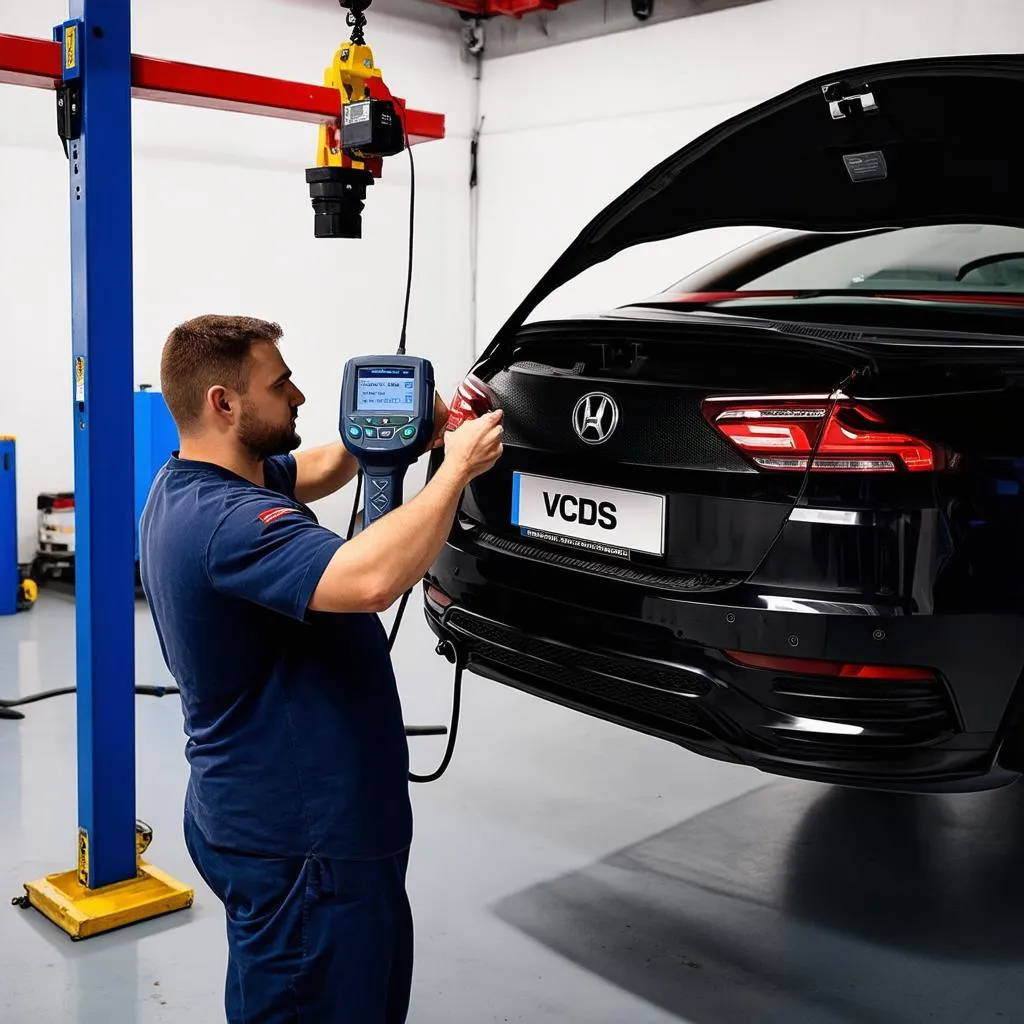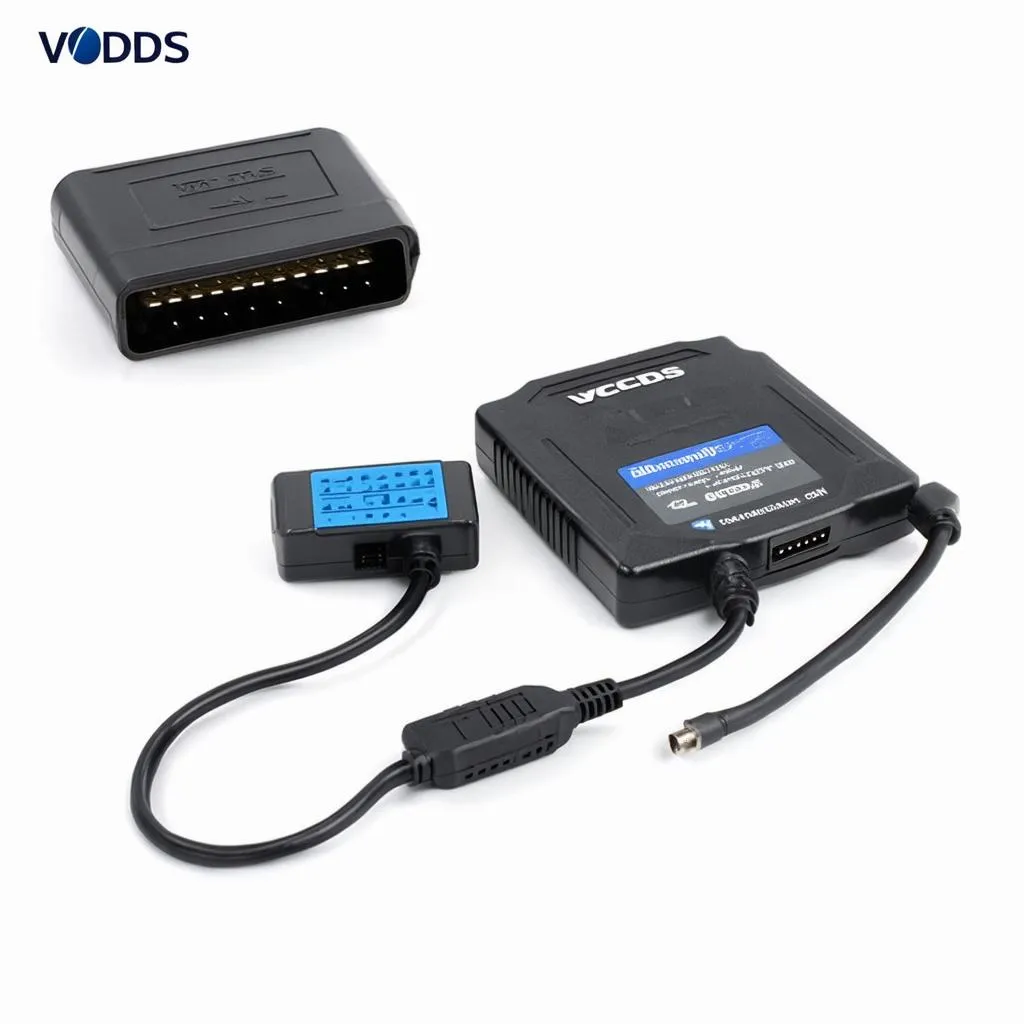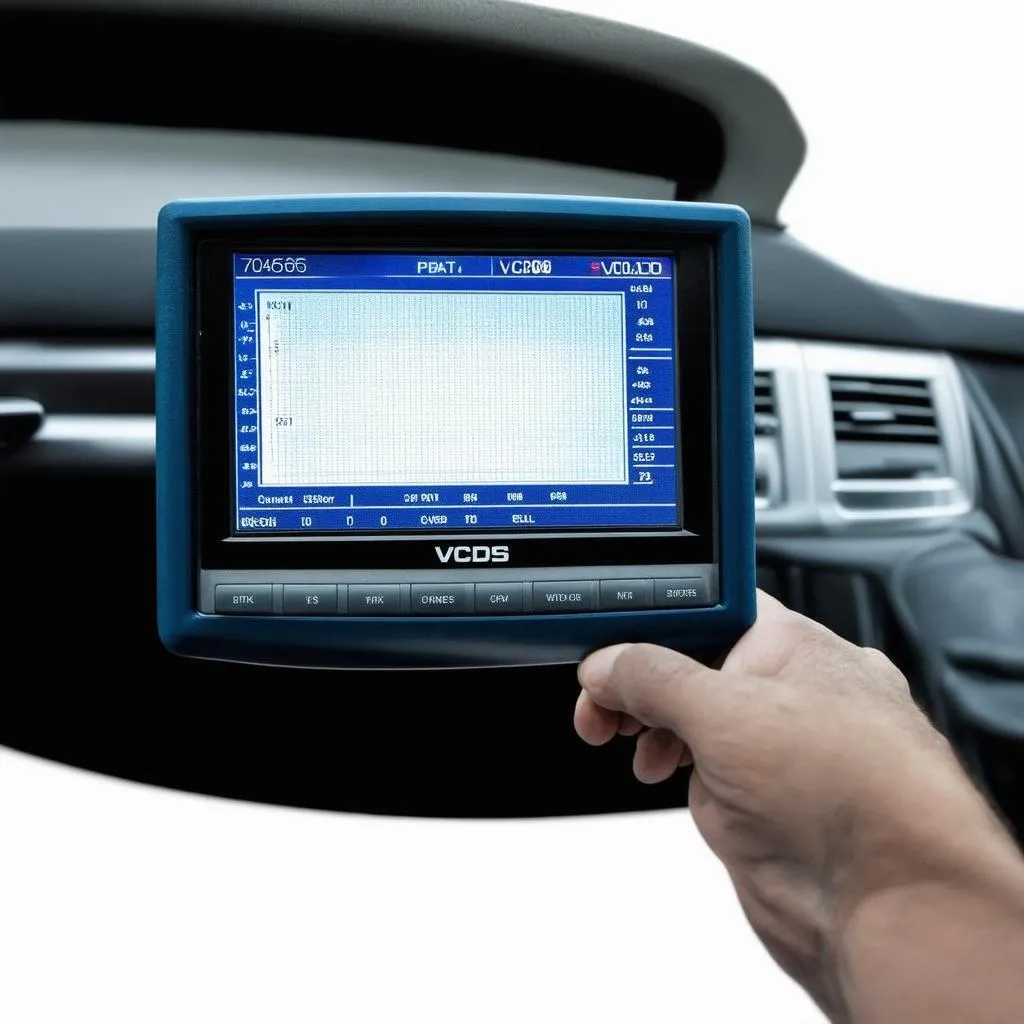VCDS Sensor Test: A Comprehensive Guide for European Car Owners
Have you ever wondered how your car’s sensors work and how to test them? As an owner of a European car, you’re likely familiar with the VCDS (Vehicle Diagnostic Systems) tool, a powerful diagnostic tool that can be used to access and analyze various aspects of your car’s systems.
In this article, we’ll delve into the world of Vcds Sensor Testing, a crucial process that can help identify and troubleshoot issues related to your car’s sensors. We’ll cover everything you need to know, from understanding the basics of sensor function to performing a VCDS sensor test, along with tips and tricks for interpreting the results.
What is a VCDS Sensor Test and Why is it Important?
Imagine this: You’re driving down the road, enjoying the open air and the sound of the engine purring smoothly, when suddenly the check engine light illuminates on your dashboard. A sense of dread washes over you. What could it be?
This is a common scenario for many car owners, and it often points to a malfunctioning sensor. Sensors play a vital role in your car’s performance, constantly monitoring various parameters and sending data to the engine control unit (ECU). The ECU uses this data to adjust engine operation and ensure optimal performance.
A VCDS sensor test is a diagnostic procedure that allows you to check the functionality of your car’s sensors. It involves using the VCDS tool to access the sensor data and analyze it for any inconsistencies or errors. This can help pinpoint the root cause of a problem and prevent further complications.
Understanding Sensors and their Role in Your Car
Think of sensors as the eyes, ears, and nose of your car. They provide vital information to the ECU, allowing it to make informed decisions about engine operation.
Here are some common types of sensors and their functions:
- Oxygen sensor (O2 sensor): Measures the amount of oxygen in the exhaust gases, ensuring optimal fuel combustion.
- Mass air flow sensor (MAF sensor): Measures the amount of air entering the engine, helping the ECU determine the correct amount of fuel to inject.
- Throttle position sensor (TPS): Monitors the position of the throttle valve, indicating the amount of air entering the engine.
- Camshaft position sensor (CMP sensor): Monitors the position of the camshaft, ensuring proper timing of the valves.
- Crankshaft position sensor (CKP sensor): Monitors the position of the crankshaft, ensuring proper ignition timing.
- Knock sensor: Detects knocking or pinging in the engine, indicating detonation and allowing the ECU to adjust ignition timing accordingly.
How to Perform a VCDS Sensor Test
Performing a VCDS sensor test is a straightforward process:
- Connect the VCDS tool to your car’s OBD-II port. The OBD-II port is usually located under the dashboard on the driver’s side.
- Select the “Measuring Blocks” option in the VCDS software. This will display a list of available sensors and their corresponding data values.
- Choose the sensor you want to test. For example, if you’re testing the oxygen sensor, select the “Oxygen Sensor” option.
- Start the engine and observe the data values displayed on the screen. The data values should be within the specified range, indicating that the sensor is functioning correctly.
- Compare the sensor readings to the factory specifications. This information can be found in your car’s repair manual or online resources.
Interpreting the Results
If the sensor readings are outside the specified range, it could indicate a malfunctioning sensor. However, it’s important to note that other factors, such as wiring problems or faulty ECU programming, could also contribute to the issue.
Here are some common signs of a malfunctioning sensor:
- Check engine light illuminated: This is often the first indication of a problem with a sensor.
- Engine performance issues: This can include poor acceleration, rough idling, and fuel economy problems.
- Emissions problems: A malfunctioning sensor can lead to increased emissions and potential failure of emissions tests.
It’s important to consult with a qualified technician if you suspect a sensor issue. They can diagnose the problem and provide the necessary repairs.
VCDS Sensor Test: FAQs
Here are some frequently asked questions about VCDS sensor testing:
Q: Can I perform a VCDS sensor test myself?
A: Yes, you can perform a VCDS sensor test yourself with the right tools and knowledge. However, it’s recommended to seek professional help if you’re unsure about the process.
Q: What are the risks associated with performing a VCDS sensor test?
A: Performing a VCDS sensor test is generally safe, but there are some risks if not done correctly. For example, incorrectly interpreting the results can lead to unnecessary repairs.
Q: How often should I perform a VCDS sensor test?
A: There’s no set schedule for performing VCDS sensor tests. It’s best to do it if you suspect a sensor issue, or as part of a routine maintenance check.
Q: What are some alternatives to using the VCDS tool?
A: Other diagnostic tools are available, but VCDS is widely considered one of the best for European cars due to its comprehensive capabilities and affordability.
Conclusion
VCDS sensor testing is a valuable tool for diagnosing and troubleshooting issues related to your car’s sensors. By understanding how sensors work and how to perform a VCDS sensor test, you can gain valuable insights into the health of your car and ensure optimal performance.
If you have any questions or concerns about VCDS sensor testing, don’t hesitate to contact us. Our team of experts is here to help you.
 VCDS Sensor Test
VCDS Sensor Test
 VCDS Tool
VCDS Tool
 Sensor Data
Sensor Data
Want to learn more about VCDS and its applications? Check out these related articles on our website:
- VCDS MAP Sensor Test
- VCDS Test MAP Sensor
- VCDS NOX Sensor Test
- VCDS Camshaft Position Sensor Test
- VCDS MAF Sensor Test
Need expert help with your car’s diagnostics? Contact us via WhatsApp: +84767531508. Our team of certified technicians is available 24/7 to assist you with all your automotive needs.
